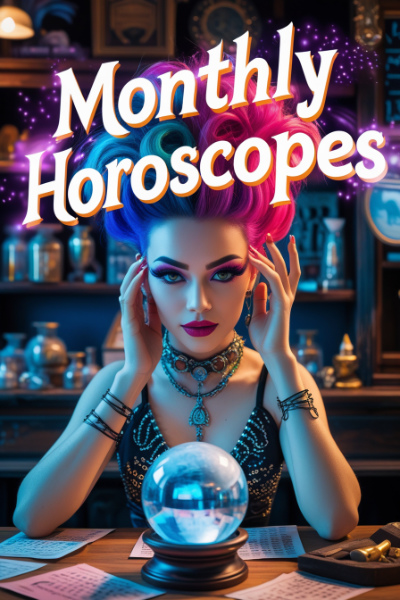
Welcome to the magical world of tarot! Whether you’ve stumbled upon this guide out of curiosity or you’re on the cusp of your first tarot reading adventure, you’re in for a delightful journey filled with mystery, insight, and a touch of enchantment.
Picture this: You’re seated at a cozy table, softly lit by candlelight, surrounded by an array of beautifully illustrated cards. As you shuffle the deck, you can’t help but feel a sense of excitement and anticipation. Each card holds the promise of unraveling the hidden threads of your destiny, offering glimpses into the past, present, and future. It’s like peering through a window into the realms of your innermost thoughts and emotions, and the universe itself.
But here’s the thing – tarot isn’t just about fortune-telling or mystical predictions; it’s a powerful tool for self-reflection, personal growth, and intuitive exploration. Whether you’re seeking guidance on life’s perplexing questions or simply intrigued by the artistry of the cards, tarot has something enchanting to offer. So, grab your favorite deck, let your curiosity lead the way, and get ready to embark on a journey of self-discovery and spiritual connection. In this guide, we’ll navigate the world of tarot together, uncovering 20 tips and insights that will make your tarot journey not only enlightening but also a whole lot of fun!
20 Tarot Tips for Beginners

1. Begin with a Beginner-Friendly Tarot Deck:
The first step in your tarot journey is selecting the right deck. There are countless tarot decks available, each with its unique symbolism and energy. As a beginner, it’s wise to start with a deck that’s considered beginner-friendly. The Rider-Waite Tarot deck is a classic choice and widely recommended for newcomers. Its symbolism is clear, and there are numerous resources, books, and online guides available to help you interpret its cards.
When you choose a deck, take some time to connect with it on a personal level. Hold the cards, look at the artwork, and see if it resonates with you. Your connection to the deck is essential, as it will enhance your intuitive abilities during readings.
2. Study the Tarot Cards Thoroughly:
Learning tarot is a journey of self-discovery and introspection. Each card carries unique meanings, and it’s essential to dedicate time to study and understand them. Start with the Major Arcana cards, which represent significant life events and spiritual lessons. Then, move on to the Minor Arcana cards, which delve into everyday situations and emotions.
To facilitate your learning, consider purchasing a tarot guidebook or using online resources. Spend time with each card, meditating on its imagery, and exploring its symbolism. Additionally, keep a tarot journal to record your interpretations, personal insights, and the outcomes of your readings. Over time, you’ll build a deep connection with the cards and develop your unique interpretation style.
3. Trust Your Intuition:
While studying the symbolism and meanings of tarot cards is crucial, it’s equally important to trust your intuition during readings. Your inner wisdom will guide you in understanding the messages the cards convey. Don’t hesitate to let your intuition take the lead, even if it contradicts conventional interpretations.
Start by conducting simple, one-card daily readings for yourself. Pay attention to your immediate thoughts, feelings, and emotions when you see the card. Over time, you’ll become more attuned to your intuition, and your readings will become more insightful and accurate.
4. Create a Sacred Space:
Establishing a sacred and peaceful space for tarot readings can enhance your connection to the cards and create a conducive atmosphere for intuitive insights. Choose a quiet and comfortable location free from distractions. You can light candles, burn incense, or play calming music to set the mood.
Before each reading, take a moment to center yourself through meditation or deep breathing exercises. Clear your mind of any clutter and focus your intent on seeking guidance or answers. Creating a sacred space not only enhances your tarot experience but also honors the spiritual aspect of the practice.
5. Practice Regularly and Seek Guidance:
Like any skill, tarot reading improves with practice. Don’t be discouraged if your initial readings feel challenging or unclear. The more you practice, the better you’ll become at interpreting the cards and understanding their messages.
Additionally, consider seeking guidance and mentorship from experienced tarot readers or joining online tarot communities. These resources can provide valuable insights, share tips, and offer support on your tarot journey. Engaging with others who share your passion can be incredibly enriching and help you refine your skills.
6. Understand Card Combinations:
As you progress in your tarot journey, it’s essential to learn how to read not only individual cards but also combinations of cards. Tarot is a language of symbols, and the way cards interact with each other can significantly influence their meanings. Card combinations can provide nuanced insights into the context of a reading.
To master card combinations, start by studying the relationships between cards in a spread. Look for patterns, similarities, or contradictions between adjacent cards. For instance, if you draw the Ten of Swords followed by the Ace of Cups, you may interpret it as a transformative release (Ten of Swords) leading to emotional healing and a fresh start (Ace of Cups).
Experiment with different spreads, such as the Celtic Cross or the Three-Card Spread, to practice reading card combinations. Over time, you’ll develop a more comprehensive and intuitive understanding of how cards work together to tell a story during a reading.
7. Develop a Personal Connection with the Cards:
While it’s essential to study the traditional meanings and symbolism of tarot cards, it’s equally important to develop a personal connection with them. Your relationship with your tarot deck is unique and deeply personal. To establish this connection, consider the following practices:
Spend time shuffling and handling your cards regularly to infuse them with your energy.
Meditate with your cards to deepen your understanding and attunement to their symbolism.
Create your own rituals or prayers before each reading to set your intentions and invoke positive energy.
Keep your tarot deck wrapped in a silk cloth or stored in a special box to protect it and keep it sacred.
The more you invest in nurturing your connection with your tarot deck, the more it will become an extension of your intuition and inner wisdom.
8. Practice Ethical Tarot Reading:
As a tarot reader, it’s crucial to practice ethical tarot reading. Tarot is a powerful tool that can influence people’s thoughts and decisions, so it’s essential to use it responsibly and with integrity. Here are some ethical guidelines to follow:
Obtain informed consent from the person you’re reading for, ensuring they are comfortable with the reading.
Respect client confidentiality and never share sensitive information from readings without permission.
Avoid making predictions about life-threatening situations, legal matters, or health issues. Encourage seeking professional advice in such cases.
Refrain from exploiting people’s vulnerabilities or fears for personal gain. Your role as a tarot reader is to provide guidance, not manipulate or instill fear.
By practicing ethical tarot reading, you can build trust and credibility with your clients and maintain the integrity of this sacred practice.
9. Explore Different Tarot Spreads:
While starting with simple spreads is advisable, as a beginner, don’t hesitate to explore and experiment with different tarot spreads as you gain confidence in your readings. Various spreads serve different purposes and can provide unique insights. For example:
The One-Card Spread is excellent for daily reflections and quick insights.
The Past-Present-Future Spread offers a broader perspective on a situation.
The Relationship Spread can provide insights into complex interpersonal dynamics.
The Zodiac Spread connects each card to an astrological sign, offering astrological insights.
The Decision-Making Spread helps with tough choices by examining the pros and cons of each option.
Experimenting with different spreads will help you diversify your tarot reading skills and adapt to various client needs.
10. Embrace Patience and Self-Reflection:
Remember that tarot is a journey, not a destination. Embrace patience and self-reflection as integral aspects of your practice. As you read for yourself and others, take time to contemplate the insights gained from your readings.
Keep a tarot journal to record your interpretations, the outcomes of your readings, and your emotional reactions to them. Regularly revisit your journal to track your progress, refine your interpretations, and observe how your intuitive abilities evolve over time.
Self-reflection and patience are key to your growth as a tarot reader. Embrace the process and enjoy the continuous learning and self-discovery that tarot offers.
11. Learn the Tarot Numerology and Elemental Associations:
To deepen your understanding of tarot cards, it’s beneficial to explore the numerological and elemental aspects associated with each card. In tarot, numbers carry symbolic meanings, and the elements (earth, water, fire, and air) play a significant role in interpreting the cards.
Each suit in the Minor Arcana corresponds to an element:
Wands: Fire
Cups: Water
Swords: Air
Pentacles (Coins): Earth
Understanding these elemental associations can provide valuable insights into the themes and energies of the cards. For example, the Ace of Cups represents the pure, emotional energy of water, while the Ten of Pentacles embodies the stability and material aspects of earth.
Additionally, numerology plays a crucial role in tarot interpretation. The number on each card can offer insights into the card’s significance and its place within a reading. For example, the number Three often represents creativity and growth, while the number Nine can signify completion and fulfillment.
By incorporating numerology and elemental associations into your tarot practice, you’ll develop a deeper appreciation for the symbolism and meaning of each card, enhancing your readings.
12. Trust Your Interpretations and Intuition:
While it’s essential to study tarot meanings and symbolism, it’s equally important to trust your interpretations and intuition. Tarot is a tool for tapping into your inner wisdom and intuition, and there’s no one-size-fits-all approach to reading the cards. Your unique perspective and intuitive insights are valuable assets in tarot reading.
When you draw a card or lay out a spread, pay attention to your immediate impressions and emotions. What thoughts or feelings arise as you examine the cards? Trust these initial reactions, as they often hold the key to a more profound interpretation.
If your intuitive interpretation contradicts a traditional meaning, don’t be afraid to explore it further. Tarot is a deeply personal practice, and your intuition will guide you toward the messages that resonate most with you and the person you’re reading for.
13. Keep a Tarot Reading Journal:
Maintaining a tarot reading journal is an invaluable practice for both beginners and experienced readers. Your journal serves as a record of your progress, insights, and personal growth throughout your tarot journey.
In your journal, record the date of each reading, the question or intention behind it, and the cards you drew. Write down your initial impressions and interpretations of the cards, as well as any emotions or thoughts that surface during the reading. Over time, you can revisit your journal entries to track patterns, growth in your interpretations, and the accuracy of your readings.
A tarot journal also helps you build a personal reference library for your readings. You can document unique card combinations, spreads that worked well, and any specific insights or intuitive breakthroughs. This ongoing record will become a valuable resource as you continue your tarot practice.
14. Seek Guidance and Feedback:
Tarot is a dynamic and evolving practice, and seeking guidance and feedback from experienced tarot readers can significantly enhance your skills. Connect with tarot communities, online forums, or local groups where you can share your experiences, ask questions, and learn from others.
Mentorship can be particularly beneficial for beginners. Finding a trusted tarot mentor or teacher can provide you with personalized guidance, practical tips, and constructive feedback. They can help you navigate challenging readings, deepen your understanding of symbolism, and offer insights into various tarot techniques and spreads.
Remember that there’s no rush to become an expert tarot reader overnight. Learning from others and drawing upon their experiences can help you progress steadily on your tarot journey.
15. Practice Mindfulness and Grounding:
Tarot readings can be emotionally charged experiences, both for the reader and the querent (the person receiving the reading). It’s essential to practice mindfulness and grounding techniques to maintain a sense of balance and clarity during readings.
Before you begin a reading, take a moment to center yourself. Grounding exercises, such as deep breathing or visualizing roots connecting you to the earth, can help you stay present and focused.
During the reading, maintain an open and non-judgmental mindset. Encourage the querent to do the same, emphasizing that tarot is a tool for guidance and reflection, not fortune-telling. Be mindful of your own biases and emotions, as they can influence your interpretations.
After the reading, take a few moments to reflect on the insights gained and any emotions that arose during the session. Practicing mindfulness and grounding techniques will not only enhance the quality of your readings but also contribute to a more positive and harmonious tarot experience.
16. Embrace Symbolism Beyond the Cards:
While tarot cards themselves are rich in symbolism, it’s also beneficial to explore symbolism beyond the cards. Pay attention to symbols and signs in your everyday life, as they can offer valuable insights during your readings.
For instance, if you consistently encounter a particular animal or object in your daily life, research its symbolism and how it might relate to your current situation or question. These external symbols can serve as powerful mirrors reflecting your inner thoughts and feelings.
Additionally, explore your dreams and their symbolism. Keep a dream journal and analyze recurring symbols, colors, and themes. Dreams often provide deep insights into your subconscious, which can be integrated into your tarot practice.
By incorporating external symbolism and dream analysis into your tarot readings, you’ll expand your interpretive skills and gain a more profound understanding of the messages the cards convey.
17. Understand the Astrological Correspondences:
Each tarot card is associated with specific astrological correspondences, which can provide valuable insights into the card’s meanings and interpretations. By delving into astrology, you can enhance your tarot readings.
For example, the Major Arcana card The Emperor is associated with the zodiac sign Aries, symbolizing leadership, authority, and assertiveness. When this card appears in a reading, you can incorporate Aries’ qualities and characteristics into your interpretation.
To deepen your understanding, study the astrological correspondences of each card in your tarot deck. This knowledge will allow you to incorporate astrological insights into your readings, providing a more comprehensive and nuanced perspective.
18. Explore Tarot Reversals:
Tarot reversals involve reading cards that appear upside down or reversed in a spread. While some tarot readers choose not to use reversals, they can add depth and complexity to your readings when used thoughtfully.
Reversed cards often suggest obstacles, delays, or inner challenges related to the card’s upright meaning. They can indicate areas where you need to pay special attention or make adjustments in your life. For example, the reversed Three of Swords may suggest healing from past emotional wounds or unresolved grief.
To incorporate reversals into your practice, shuffle your deck in a way that some cards may appear upside down when drawn. Interpret reversed cards by considering their upright meanings alongside potential blockages or internal conflicts. Remember that reversals offer an additional layer of insight, but you should use them in a way that feels comfortable and meaningful to you.
19. Practice Tarot Meditation:
Tarot meditation is a unique way to connect with the cards on a deeper level and tap into your intuition. It involves selecting a tarot card and meditating on its imagery and symbolism to gain insights and inspiration.
Begin by choosing a card that resonates with you or one that you find intriguing. Place it in front of you and focus your attention on its details. Close your eyes and take a few deep breaths to center yourself. Then, imagine stepping into the card’s scene or merging with its energy.
During your meditation, pay attention to any thoughts, emotions, or sensations that arise. These may provide valuable insights into the card’s message for you at that moment. You can also journal your experiences and reflections after the meditation.
Tarot meditation not only deepens your connection to the cards but also enhances your intuitive abilities and spiritual growth.
20. Experiment with Timing Tarot:
Timing tarot is a unique aspect of tarot reading that involves using the cards to gain insights into the timing of events or actions. While it’s not always precise, it can offer valuable guidance on when to expect certain developments in your life.
To incorporate timing tarot into your practice, you can use specific cards or spreads designed for timing. For example, you can use the following cards as general indicators of time:
Wands: Indicating days or weeks.
Cups: Representing months or lunar cycles.
Swords: Suggesting weeks or months.
Pentacles (Coins): Signifying months or seasons.
You can also use spreads specifically designed for timing, such as a past-present-future spread that provides a general timeline for events.
Keep in mind that timing in tarot is symbolic and can be influenced by various factors, including your intuition and the context of the reading. It’s not meant for precise predictions but can offer helpful guidance on the timing of events in your life.
Final Musings:
As you conclude this guide, remember that tarot is a boundless adventure waiting to be explored. It’s a realm where you’re the navigator, and the cards are your trusty compass. So, keep those cards close, trust in your intuition, and let the wisdom of the tarot illuminate your path.
Whether you’re using tarot for daily inspiration, seeking answers to life’s mysteries, or simply enjoying the enchantment of the cards, may your tarot journey be filled with insights, laughter, and a touch of magic. As you continue to shuffle, draw, and interpret, know that the world of tarot is ever-evolving, just like you. Embrace the mystery, trust your instincts, and savor the enchantment of this timeless practice. Here’s to a future filled with delightful tarot readings and the endless wonders they bring!




